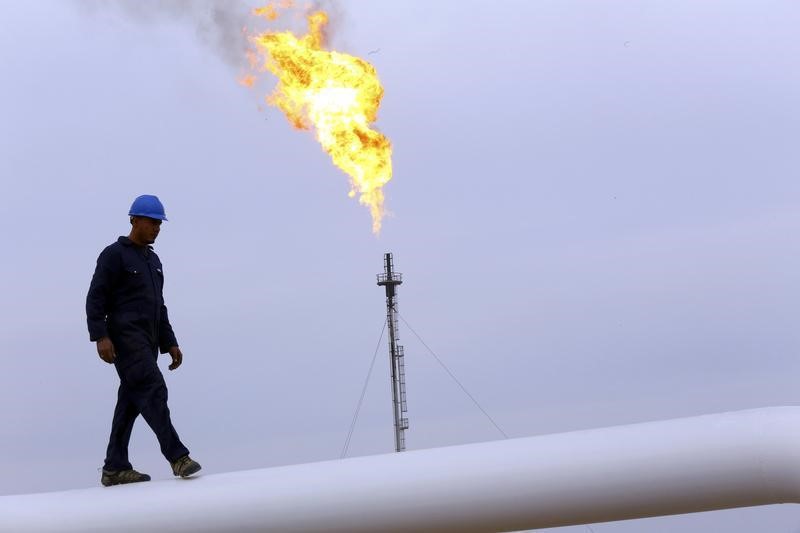Investing.com – “Never a dull moment in the oilfield,” oil services firm Panther says on its website. By that extension, of course, are the oil markets, which seldom go a day, or even hours, without drama.
Friday was one such day. Crude prices jumped as much as 7% on the week — finishing the week with the same heightened nerves as they began — as the Middle East crisis moved into a new heightened phase after Israel said it will begin a ground assault on Gaza a week into its renewed war with Palestine militant group Hamas. The White House announced its first sanctions on companies aiding Russia in selling oil at above the $60 per barrel cap set by the United States and its allies.
New York-traded , crude for delivery in November settled up $4.78, or 5.8%, at $87.69 per barrel, after a session high of $87.83. The US crude benchmark finished the week up just shy of 6%.
London-traded crude for the most-active December contract settled up $4.89, or 5.7%, at $90.89, returning to above the $90-per-barrel sweet spot craved by oil bulls. The session peak for the global crude benchmark was $90.67.
In between Friday and Monday’s 4% rally triggered by Hamas’ opening attacks on Israel in their all-new war, the market plunged on the largest US build since February and a new record for production that overwrote the pre-pandemic one.
Reuters also reported that Saudi state oil firm Aramco (TADAWUL:) had notified at least four refiners in North Asia that it would supply them with the full contractual volumes nominated for November. That challenged the notion that Saudi priority was about keeping the market tight with production cuts, not assuring that supplies were generously available as needed.
Iran looking eager to get into Middle East war action
Prices shot back higher from a combination of the Israel-Hamas conflagration and the crackdown over Russia’s breach of the G7 price cap on oil — which could worsen the so-called ‘tight oil market’ narrative wired more into the brain of oil traders than anything else.
Adding to the muddle was the Mullah leadership in Tehran looking eager to jump into the Middle East fray despite both Israel and the United States keeping them at bay for now.
Scott Sheffield, broker and commentator for oil futures at ICAP (LON:) in Durham, North Carolina, stressed on that point in his market commentary on Friday, observing that the latest rally “appears to be correlated with Iran making statements supporting Hamas and stating that a “new front“ may open if Israel war crimes continue, while the media is blaming it on tighter sanctions.”
Iran’s role in any expanded Israel-Hamas war is being closely watched given that it is the world’s fifth largest oil exporter.
While Iranian oil exports are under sanctions too like Russia, since late 2022, Washington has turned a blind eye to surging crude shipments from the Islamic Republic. The priority in Washington then was an informal détente with Tehran so as to allow the world more oil supply to offset output cuts by the producer group OPEC+.
As a result, Iranian crude output is estimated to have surged nearly 700,000 barrels a day this year – the second-largest source of incremental supply in 2023, behind only US shale oil.
That enforcement could change if Iran actively gets involved in the current Hamas war with Israel.
(Peter Nurse contributed to this article)
Read the full article here










